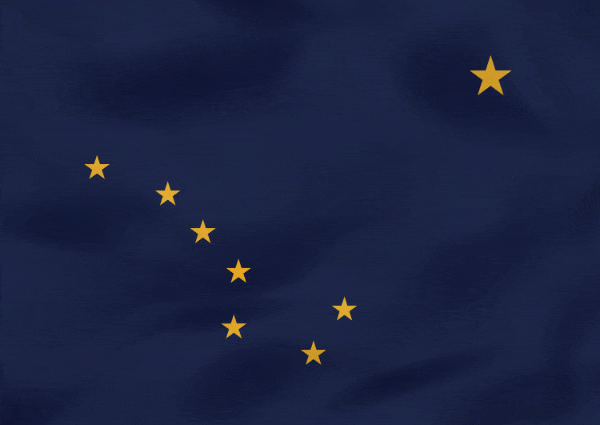 History Vitus Bering, a Dane working for the Russians, and Alexei Chirikov discovered the Alaskan mainland and the Aleutian Islands in 1741. The tremendous land mass of Alaska-equal to one-fifth of the continental U.S.-was unexplored in 1867 when Secretary of State William Seward arranged for its purchase from the Russians for $7,200,000. The transfer of the territory took place on Oct. 18, 1867. Despite a price of about two cents an acre, the purchase was widely ridiculed as "Seward's Folly." The first official census (1880) reported a total of 33,426 Alaskans, all but 430 being of aboriginal stock. The Gold Rush of 1898 resulted in a mass influx of more than 30,000 people. Since then, Alaska has contributed billions of dollars' worth of products to the U.S. economy. In 1968, a large oil and gas reservoir near Prudhoe Bay on the Arctic Coast was found. The Prudhoe Bay reservoir, with an estimated recoverable 10 billion barrels of oil and 27 trillion cubic feet of gas, is twice as large as any other oil field in North America. The Trans-Alaska pipeline was completed in 1977 at a cost of $7.7 billion. Oil flows through the 800-mile-long pipeline from Prudhoe Bay to the port of Valdez. Other important industries are fisheries, wood and wood products, furs, and tourism. Denali National Park and Mendenhall Glacier in North Tongass National Forest are of interest, as is the large totem pole collection at Sitka National Historical Park. The Katmai National Park includes the "Valley of Ten Thousand Smokes," an area of active volcanoes. The Alaska Native population includes Eskimos, Indians, and Aleuts. About half of all Alaska Natives are Eskimos. (Eskimo is used for Alaska Natives; Inuit is used for Eskimos living in Canada.) The two main Eskimo groups, Inupiat and Yupik, are distinguished by their language and geography. The former live in the north and northwest parts of Alaska and speak Inupiaq, while the latter live in the south and southwest and speak Yupik. About a third of Alaska Natives are American Indians. The major tribes are the Alaskan Athabaskan in the central part of the state, and the Tlingit, Tsimshian, and Haida in the southeast. The Aleuts, native to the Aleutian Islands, Kodiak Island, the lower Alaska and Kenai Peninsulas, and Prince William Sound, are physically and culturally related to the Eskimos. About 15% of Alaska Natives are Aleuts. |
Read this profile of Alaska to learn about the state's history, points of interest, and government. Also find interesting facts about each state, including the state's motto, symbols, and when it entered the union.




